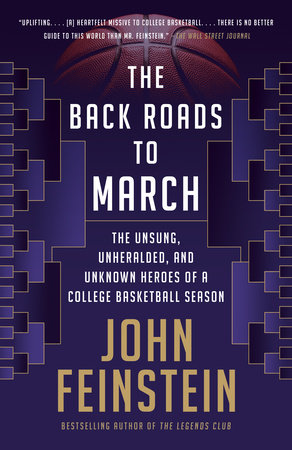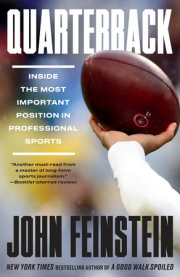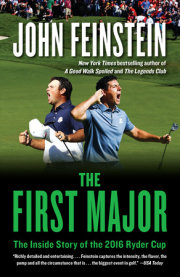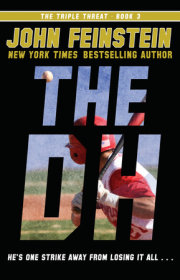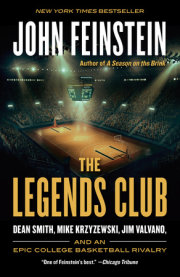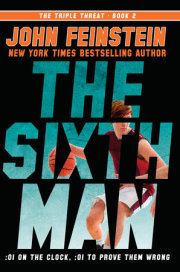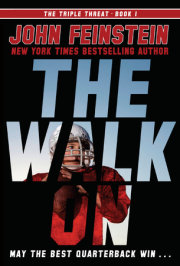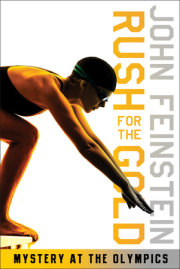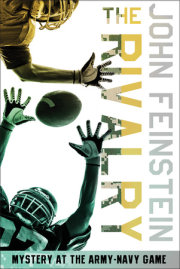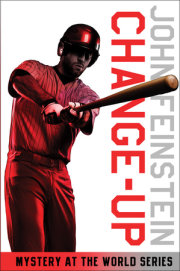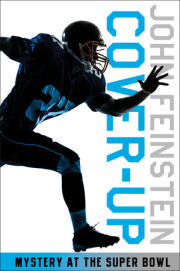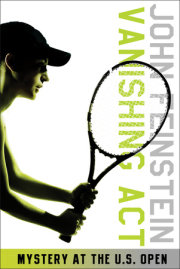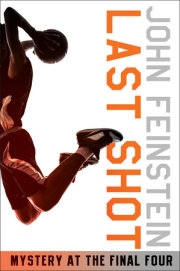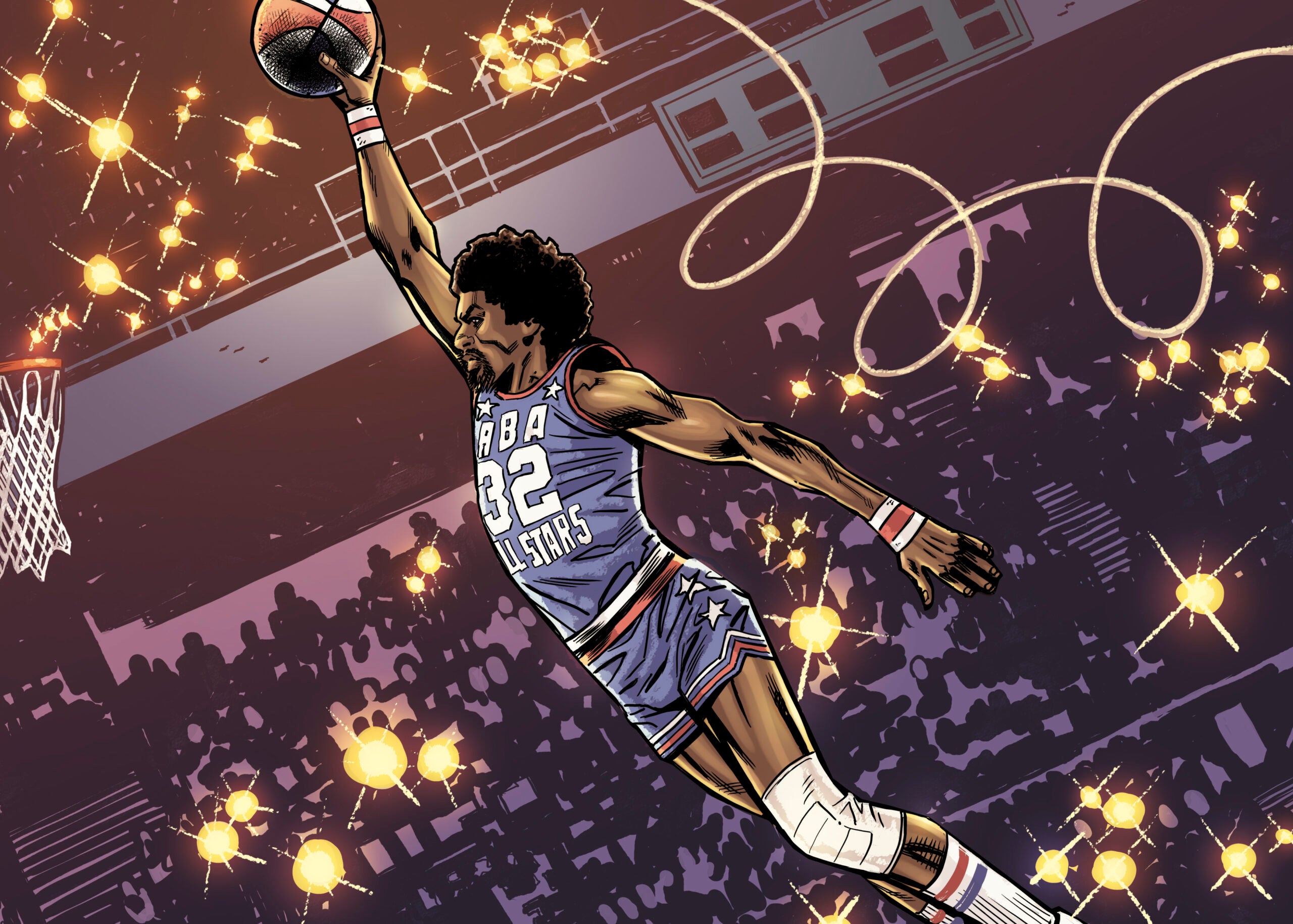As soon as the buzzer sounded, I closed my computer. Ever helpful, the NCAA had put out its one millionth printed statement of Final Four weekend prior to the start of the game, warning all of us in the media that confetti would come pouring out of U.S. Bank Stadium’s ceiling as soon as the national championship game ended.
Sure enough here it came, and I quickly closed the computer so as not to have to spend several minutes picking confetti from the keys. Not my first rodeo. It was 10:40 central time in Minneapolis—11:40 in the east—and, as was always the case on Monday night, time was precious.
For a moment, while waiting to be able to safely open the computer and resume writing, I flashed back nine years to another Monday night. There were thirty-one seconds left in the NCAA championship game between Duke and Butler, and the Bulldogs had the ball and had just called a time-out, trailing 60–59.
Ohio State athletic director Gene Smith, who was that year’s chairman of the NCAA basketball committee, was sitting to my left. As the buzzer sounded to end the time-out, Smith leaned over to me and said, “Okay, you’re the ultimate defender of the little guy. But you’re also a Duke graduate. What do you want to see happen here?”
I looked at my watch. It was 11:37 p.m. in Indianapolis. Prior to the game, my editor at the
Washington Post had told me that if I wanted my column to make the home edition of the newspaper, he needed it in the office by midnight.
I had spent most of the last thirty minutes writing and rewriting as the game swung back and forth. The first ten paragraphs were unwritten, pending the outcome.
“Gene, it’s 11:37 p.m.,” I said. “I have to hit the send button by midnight or my column won’t make most of the morning’s papers. The only thing I don’t want to see is f——overtime.”
Smith laughed. I could not have been more serious. The late, great Dave Anderson, the Pulitzer Prize–winning
New York Times columnist, had explained to me early in my career that “the first rule of sportswriting is simple: it’s always okay to root for yourself.”
On that crisp April evening in 2010, I wasn’t rooting for Butler—the David of college basketball—a team that had pulled one upset after another to reach the final game and now had close to seventy thousand fans screaming for one last shocker to finish the Disney movie.
I wasn’t rooting for Duke—my alma mater—coached by Mike Krzyzewski, someone I had known well, liked, and admired for more than thirty years. In the minds of most college basketball fans, Duke wasn’t just Goliath; it was Darth Vader. The evil empire in shorts.
I wasn’t rooting for either team. I was rooting, at that moment, for me. I knew I had a great story—regardless of the outcome. I just needed to have time to write it so that the
Post’s readers would get a chance to read it.
Nine years later, I had felt much the same way as the Virginia–Texas Tech national championship game wound down. Like Duke-Butler, it was riveting, the teams taking turns appearing to gain control.
Virginia had led by ten late in the second half, but Texas Tech had rallied to take a 68–65 lead with under twenty seconds to play. Somehow, the Red Raiders, a superb defensive team, lost track of UVA’s De’Andre Hunter, leaving him wide-open in the corner.
As soon as I saw Hunter catch the ball, I knew his three-point shot was going in and the game was going to overtime. Texas Tech lost in overtime; I lost in regulation.
But even as the clock ticked toward midnight on the East Coast and I waited impatiently for it to be safe to reopen my laptop, I was smiling while Virginia celebrated.
I was happy for Coach Tony Bennett, who had been brutally maligned a year earlier after the Cavaliers had become the first No. 1 seed in NCAA Tournament history to lose to a No. 16 seed. Prior to UVA’s game in Charlotte against the University of Maryland–Baltimore County, No. 1 seeds had been 135-0 against No. 16 seeds.
Just before midnight on the eve of St. Patrick’s Day, that record had become 135-1. UMBC-74, Virginia-54. That score hangs from a banner inside UMBC’s Retriever Events Center and will be there for as long as they continue to play basketball.
That loss hung around Bennett’s neck for more than a year. He answered every question, never snapped when it came up, and didn’t bother to mention that Hunter, arguably his best player, had been injured that night and watched the game from the bench.
Bennett never fell back on the clichés of jock-world losers: “That’s in the past, we’ve moved on”; “I only want to talk about the present”; or the catchall “That was a different team. I’m focused on this team.”
In a twist, the coach who most wanted to put UMBC-74, Virginia-54, behind him was UMBC coach Ryan Odom. His slogan for his 2018–19 team was “no looking in the rearview mirror.”
Odom’s Retrievers were a different team: K. J. Maura and Jairus Lyles, the senior guards who had keyed the upset, were both gone. UMBC wasn’t just a different team; it had a different
place in the college basketball pantheon. No longer did basketball people wonder what the letters
UMBC meant when spelled out.
Everyone knew what they meant: UMBC-74, Virginia-54. Or, if you preferred, 1-135.
“It’s an amazing story, isn’t it?” Bennett said to me about an hour after the nets came down in Minneapolis, referencing where his team had been that night in Charlotte and where it was now, walking away with the championship plaque.
Of course, the NCAA had carefully choreographed every moment of the postgame celebration. First the confetti; then the players and coaches being herded onto a platform where NCAA president Mark Emmert would grab the microphone for a few unneeded words; followed by basketball committee chairman Bernard Muir, the athletic director at Stanford, presenting the plaque to Bennett.
Then the nets were cut down, not like in the old days when players hoisted one another and then the coaches up to the rim to get their cuts of the net, but on something called “the official ladder of the NCAA.”
Finally came the playing of the impossibly hokey and corny “One Shining Moment,” during which the players and coaches were required to stand on the podium looking teary-eyed and the media was required to clear the area around the podium.
Nothing interferes with “One Shining Moment.” It is, after all, a tribute to the purity of the great moments that make up the NCAA Tournament. Forget the FBI corruption investigations, the coaches with multimillion-dollar salaries; this is all about the “student-athletes.”
Virginia was a worthy and eminently likable champion. And, within three weeks of the playing of “One Shining Moment,” four of their starters—all underclassmen—had declared for the NBA draft.
From “One Shining Moment” to “Show Me the Money.”
I didn’t blame any of them even a little bit.
As I watched the Virginia players cut down that final net, my mind raced sixty-one miles down the road from Charlottesville, Virginia, to Farmville, Virginia.
Yes, Farmville, Virginia, is a real place—although my wife was very skeptical about that fact on the night of January 24, 2019, when I had traveled there to watch Longwood University host High Point in a Big South Conference game.
“Classic coaching matchup,” Longwood coach Griff Aldrich had said that afternoon. “Me, with twelve career coaching wins, taking on Tubby Smith with six hundred and six—and a national championship.”
Griff smiled. “My players better be a
lot better than his players, because I’m sure as heck not going to outcoach him.”
Aldrich’s players were good enough that night for a 55–51 victory, cutting the gap between Aldrich and Smith in wins from 594 to 593.
During the game, my wife, Christine, sent me a text. Christine is not exactly a jock. She got her undergraduate degree from Vassar in English literature. She then got a master’s from Boston University in English and Irish poetry and worked for five years for Robert Pinsky when he was the U.S. poet laureate. She was later a literary agent and an editor at Random House. She could undoubtedly have written a poem—or perhaps a sonnet—about the matchup between Aldrich and Smith. But she had no idea who they were, where they coached, or why I might be watching their teams play on a cold night in January.
Her in-game text was short and to the point: “I forget where you are tonight,” it said. “What time will you be home?”
“I’m in Farmville, Virginia,” I wrote back. “Home about midnight.”
The response came flying back almost as soon as I’d hit the send button: “You are having an affair,”
it said. “There is no such place as Farmville, Virginia.”
Yes, Christine, there is a Farmville. And there is no question that Willett Hall, with 1,481 in attendance, was
the place to be that night in Farmville.
The real question, then, was this: Why was I in a not-mythical place called Farmville that night?
The answer to the question really goes back to the night of the national championship game. My first Final Four was in 1978, in what was then called the St. Louis Checkerdome. The first game on semifinal Saturday, between Duke and Notre Dame, began at 12:30 central time. The second game—Kentucky and Arkansas—started just before 3 p.m. local time.
I was the night police reporter for the
Washington Post, but had convinced sports editor George Solomon to let me fly out there since Duke was playing. I had graduated from Duke the previous May. In my four years as an undergraduate, Duke finished last, tied for last, last, and tied for last in the ACC. In those days, when we talked about making the Final Four it was a reference to the semifinals of the ACC Tournament. It never happened while I was in school; the Blue Devils lost their opening game in the conference tournament every March.
Which is why the notion of being in the real Final Four seemed impossible. My deal with George was—as I would learn in later years—classic George. I paid my own way to St. Louis, shared a hotel room with columnist Ken Denlinger, and wrote a sidebar each day.
All George had to do was come up with a credential for me—sort of. He had sent one of the paper’s columnists, Dave Kindred, to cover the women’s Final Four, since the Maryland women were playing there. I had Kindred’s credential for Saturday’s semifinals. For the championship game Monday night, I was on my own.
This was years before media credentials had photos on them or there were security checks to get into a basketball game. After Duke beat Notre Dame on Saturday, Duke sports information director Tom Mickle found Skeeter Francis, the ACC’s media director.
“Need a credential for John for Monday,” Mickle said.
Skeeter reached into his pocket of his blindingly loud jacket, pulled out a credential, and handed it to me. Simple as that. On Saturday, I sat in Kindred’s courtside seat. On Monday night I sat in the seat assigned to the Notre Dame SID. He had gone home.
Those were the days.
They are, of course, long gone. The Final Four hasn’t been played in a basketball arena since 1996. Now it’s played in seventy-thousand-plus-seat football stadiums, with the court smack in the middle of the football field in order to maximize the number of seats that can be sold.
The benches are below floor level, as are the media seats, and most of the sight lines—even if you aren’t sitting upstairs five miles from courtside—aren’t very good.
But the Final Four sells out every year and has become one of those mega TV events that are part of the culture, like the Super Bowl, the World Series, and the Masters. People just want to say they were
there. Corporations pay big bucks to gain all the perks that come with being NCAA “corporate champions.”
I still go because I’m fortunate enough that the
Washington Post still wants me to go—at least nowadays, unlike 1978, the paper pays my way—and because I enjoy seeing friends I’ve made in both media and coaching through the years. The Final Four is an annual convention of the college basketball world as much as it is a basketball tournament.
But it is no longer the joyride for me that it was in those innocent years when Skeeter Francis could pull a credential out of his pocket and hand it to me.
The first game on Saturday no longer starts at 1:30 eastern time; it starts at 6:10. In 1978, there were six scheduled TV time-outs per game that lasted ninety seconds each. Now there are
ten, each lasting three minutes. Halftime, once fifteen minutes, is now closer to twenty-two minutes. They put twenty minutes on the clock, but the clock doesn’t start until one coach does one of those mind-numbing halftime TV interviews and exits the court.
That means games that once took about an hour and forty-five minutes to play take closer to two hours and fifteen minutes—or more.
On that first Final Four Saturday of my life in St. Louis in 1978, I finished my second game story not long after six o’clock local time and had plenty of time to go out and have dinner. So did most fans, who exited the building after Kentucky’s win over Arkansas, soon after five o’clock.
In Minneapolis last year, 2019, the Texas Tech–Michigan State game ended at about 10:15 central time. I finished writing my column a few minutes before midnight. And two nights later, the confetti began falling at 10:40 p.m. in Minneapolis—11:40 on the East Coast.
I was just happy the game didn’t go double overtime.
As I walked back to my hotel that night, I was thinking about why I had wanted to do this book so much.
Copyright © 2020 by John Feinstein. All rights reserved. No part of this excerpt may be reproduced or reprinted without permission in writing from the publisher.





